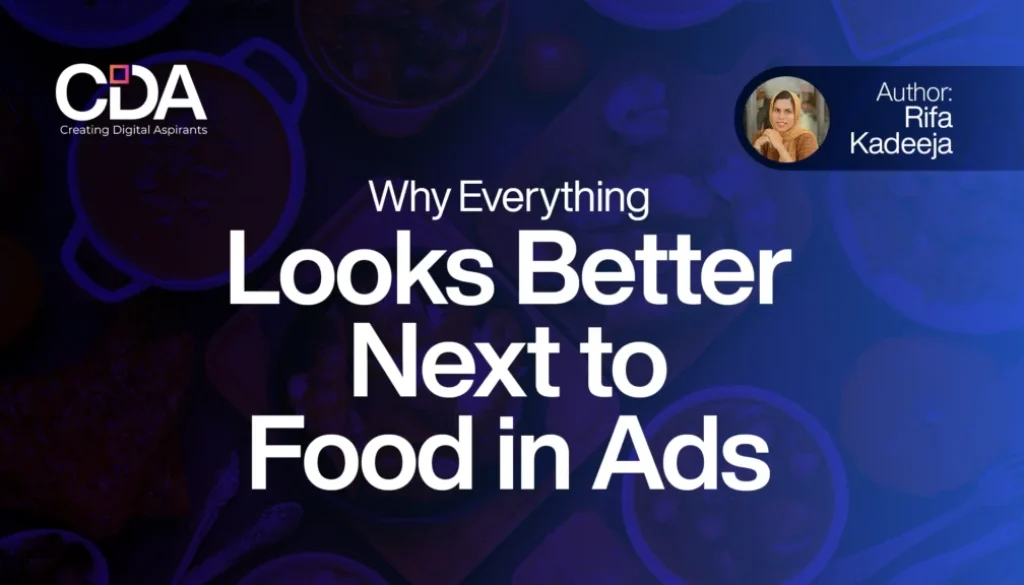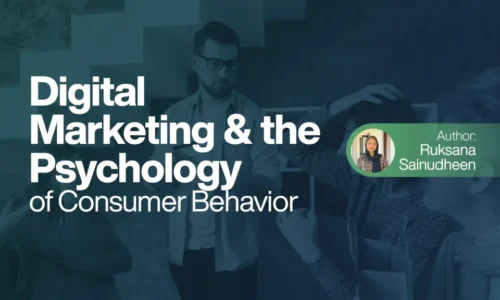Why Everything Looks Better Next to Food in Ads
Have you ever noticed how some brands feature their products next to delicious, vibrant foods in their advertisements, even when the product has nothing to do with eating? Whether it’s a luxury skincare item, a high-end handbag, or a tech gadget, food often makes an appearance in these ads. At first glance, it might seem like an odd pairing. However, for many brands, this strategy is a carefully considered way to enhance the appeal of their products.
For instance, imagine a skincare brand showing its lip balm beside a fresh fruit salad or a cup of herbal tea. The lip balm, which is designed to hydrate and nourish, is paired with food something we associate with nourishment, freshness, and self-care. This combination elevates the product from a simple skincare item to something more indulgent, more luxurious, and more connected to an overall lifestyle of well-being.
The use of food in advertising is becoming increasingly popular across industries, and it’s not just about making products look good. It’s about creating emotional connections and selling an experience. Let’s explore how brands are making their products irresistible by pairing them with food.
Table of Contents
1. Leverng the Emotional Connection to Food
Food is more than just something we consume. It’s tied to our emotions, representing comfort, pleasure, and indulgence. When brands place their products next to food, they are tapping into these emotional connections. Suddenly, the product isn’t just an item; it becomes part of a larger experience of joy and satisfaction.
For example, imagine a luxurious skincare product paired with a cup of freshly brewed coffee. The coffee, with its rich aroma and calming effect, enhances the experience of applying the skincare product. The food connects the product with feelings of relaxation, self-care, and enjoyment. It turns the product into something more than functional; it’s a small luxury, a treat for the senses.
2. Creating a Sense of Lifestyle and Aspiration
Food often appears in ads as part of a broader lifestyle. It’s not just about the product it’s about the life the product represents. Take a high-end fashion brand, for example. They might feature their latest collection next to a beautifully set dinner table or a glass of wine. The food creates an atmosphere of sophistication and leisure, aligning the brand with a certain aspirational lifestyle.
By pairing a product with food, brands suggest that their product is part of a larger experience one filled with quality, indulgence, and enjoyment. Whether it’s a stylish handbag shown next to a decadent dessert or a tech gadget placed beside a gourmet meal, the product becomes more desirable because it’s associated with moments of pleasure and luxury.
3. Enhancing the Aesthetic Appeal
Food is visually striking. Its vibrant colors, textures, and gloss naturally draw attention. When placed next to a product, food can enhance the product’s aesthetic appeal, making it look more attractive and desirable.
For example, a skincare product, shown next to a fresh, colorful fruit platter, instantly appears more refreshing and rejuvenating. The food adds a visual contrast that makes the product stand out more, and the combination of vibrant colors communicates a sense of health and vitality. The food doesn’t just look good it makes the product look better too.
4. Associating Quality and Indulgence
Food is often tied to indulgence whether it’s a rich chocolate cake or a fine glass of wine, food is a reward, a treat. When a brand pairs its product with food, it creates a subconscious connection between the product and the quality of that food. It suggests that the product is just as luxurious, just as deserving of indulgence.
For instance, a luxury skincare product shown beside a bowl of fresh berries or a piece of artisanal chocolate instantly evokes the idea that this product is a treat. It becomes more than just something to use; it becomes something to savor, to enjoy as part of a pleasurable moment. The food elevates the product, making it feel like a necessary part of the indulgent experience.
5. Using Food to Sell Experiences, Not Just Products
Food is an experience. A meal isn’t just about eating; it’s about the sensory pleasure, the enjoyment, and the moments shared with others. By pairing a product with food, brands are selling more than just an item; they’re selling an experience.
For example, home decor brands often pair their products with food in their ads, creating a sense of a cozy, perfect dinner setting. The product isn’t just a chair or a lamp it’s part of a scene where you’re enjoying a comforting meal, surrounded by loved ones, creating memories. Food helps sell the experience of enjoying the product, making it feel more desirable and relevant to consumers’ daily lives.
6. Creating a Multi-Sensory Appeal
The presence of food in ads also enhances the sensory appeal of a product. It makes you imagine the taste, smell, and feel of the food, which then extends to how you perceive the product. For instance, a beauty product shown next to a refreshing smoothie bowl or a slice of cake makes you feel the product’s indulgence before you even touch it.
This multi-sensory connection can make a product feel more luxurious, more essential, and more connected to moments of enjoyment. It goes beyond visual appeal it invites consumers to feel the product’s value in a deeper, more sensory way.
Conclusion: The Power of Food in Advertising
Food has an undeniable power to enhance the appeal of products. By pairing a product with food, brands can tap into emotional connections, create a sense of aspiration, and elevate their product’s desirability. Whether it’s a skincare brand, a tech company, or a luxury fashion label, food helps sell more than just an item it sells an experience, a lifestyle, and a moment of indulgence.
So, what do you think about this food strategy? Is it an effective way for brands to connect with consumers, or just another marketing tactic? We’d love to hear your thoughts!
Author Info
Rifa Kadeeja, a Digital Marketing Expert in Calicut.
Learner of CDA Digital Marketing Courses in Calicut.



